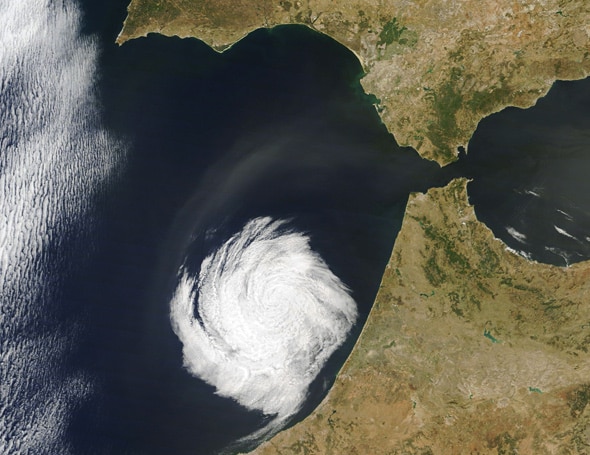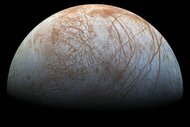Create a free profile to get unlimited access to exclusive videos, sweepstakes, and more!
A festival of clouds

[Image credit: NASA Earth Observatory image by Joshua Stevens, using MODIS data from LANCE/EOSDIS Rapid Response.]
Perhaps one of the most profound examples of the phrase “familiarity breeds contempt” is a cloud.
You see clouds nearly every day, but they are truly remarkable phenomena. They come in vast varieties of form, size, color, depth and behavior. They can contain water from drops too small to see to ones large enough to fall to the ground, giving us life-sustaining rain, or, in too large a quantity, dangerous flooding. The water can be frozen, or a gas. It can both rise and fall inside the cloud, generating staggering electrical voltages, sparking tremendous discharges we call lightning (which, itself, comes in numerous flavors).
Clouds can flip between being visible and invisible, they can roll across the sky, or appear to hover eerily over mountains. They can block the sunlight, or transmit it through themselves, transforming it into stunning displays of geometry and color.
They can be dangerous and deadly, and can trace the land beneath them, creating waves, swirls, and other surprising shapes, all of which are delightful and uplifting.
They can even dance!
This is why I’m happy that NASA’s Earth Observatory has created a wonderful page called “A Festival of Clouds”, featuring a menagerie of nebular awesomeness. Full of satellite images, it shows the amazing diversity of odd clouds across the planet, including many of my favorites. Besides their obvious beauty, there are many types of clouds I bet you haven’t heard of. Ship waves? Pyrocumulus? Fall streaks? Seen from space, these become works of art, impelled by science.
Go there, click around, and by all means make sure you investigate the Earth Observatory Image of the Day, one of my favorite sites on the whole of the Internet. There is something astonishing and moving about seeing our planet from space, of knowing that it was our desire to look outward that lead to such insights when we look downward.
So, don’t even try to tell me clouds are boring, mundane, trivial. They are magnificent, and a glorious reminder of the physics underlying everyday life.


























